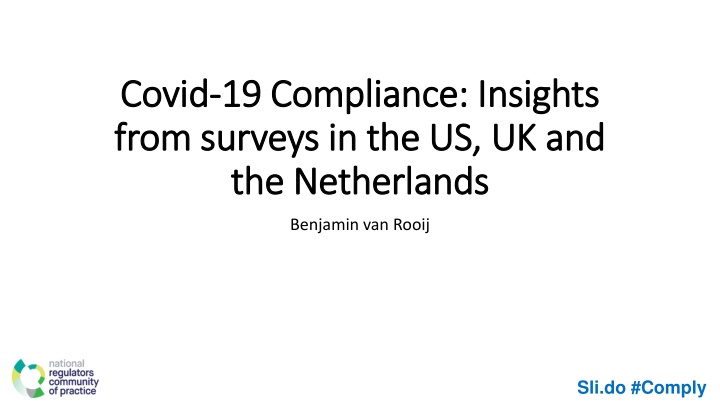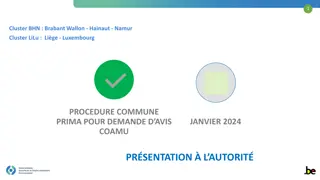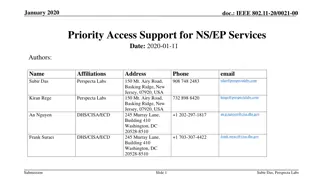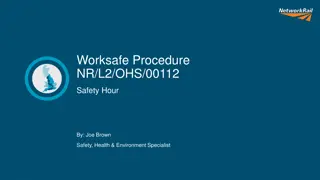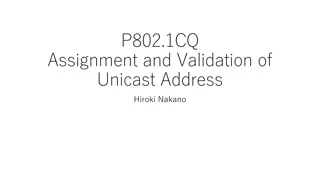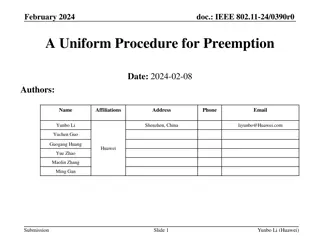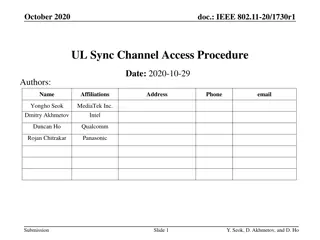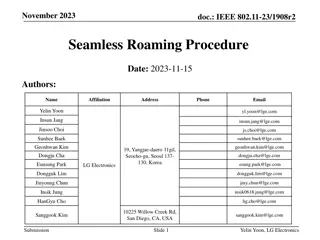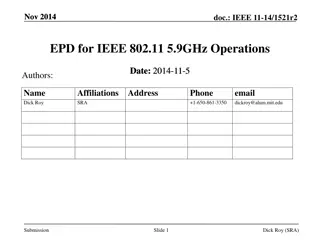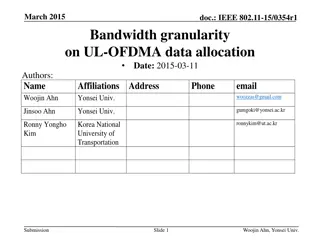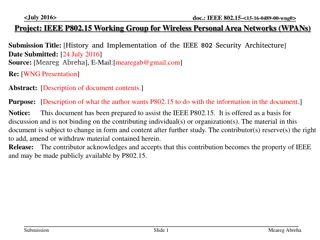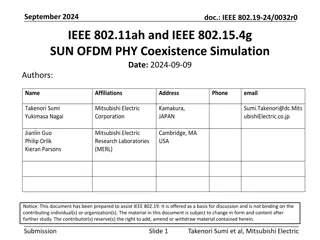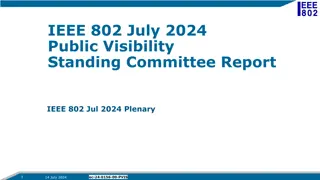IEEE 802.11-16/0960r1 AP Access Procedure
This document discusses the AP access procedure for UL MU operation in IEEE 802.11-16/0960r1 standard. It covers topics such as trigger frame transmission, UL decision making, channel access methods, legacy 802.11 channel access, trigger frame access categories, and related procedures. In-depth insights into trigger frame channel access and associated considerations are provided for efficient operation in wireless networks.
Download Presentation

Please find below an Image/Link to download the presentation.
The content on the website is provided AS IS for your information and personal use only. It may not be sold, licensed, or shared on other websites without obtaining consent from the author.If you encounter any issues during the download, it is possible that the publisher has removed the file from their server.
You are allowed to download the files provided on this website for personal or commercial use, subject to the condition that they are used lawfully. All files are the property of their respective owners.
The content on the website is provided AS IS for your information and personal use only. It may not be sold, licensed, or shared on other websites without obtaining consent from the author.
E N D
Presentation Transcript
Covid Covid- -19 Compliance: 19 Compliance: Insights from from surveys surveys in in the the the Netherlands Netherlands Insights US, UK and the US, UK and Benjamin van Rooij Sli.do #Comply
Results from the US April 3, 570 participants from 35 States Self-reported compliance was high (6.32 out of 7) What played a role in compliance? Specific moral alignment (+) Negative emotions (+) Impulsivity (-) Social norms (+) Capacity to comply (+) Opportunity to violate (-) Non-normative obligation to obey the law (-) Sli.do #Comply
Sli.do #Comply Results from the UK April 6-8, 555 participants, nationally representative UK What played a role in compliance? Meeting People 6.47 Safe Distance 6.41 Lockdown 6.51 Compliance (1-7) Fear of disease Specific moral alignment Negative emotions Knowledge of the rules Capacity to comply Normative obligation to obey the law Political orientation (conservative) - + - + + + + + -
Results from the Netherlands April 7-14, 568 participants Self-reported compliance was high (6.05 out of 7) What played a role in compliance? Fear for health (+) Specific moral alignment (+) Impulsivity (-) Knowledge of the measures (+) Capacity to comply (+) Opportunity to violate (-) Sli.do #Comply
Overall findings and thoughts Fear of punishment did not play a role in any of the cases What mattered were intrinsic motivations and practical abilities and opportunities With lockdowns easing, compliance with social distancing will likely get harder as intrinsic motivation goes down and opportunities to violate go up, while it will be harder to enforce the rules. The findings show generally that governments can achieve massive behavioral change and that to do so they can look beyond a focus on deterrence Sli.do #Comply
